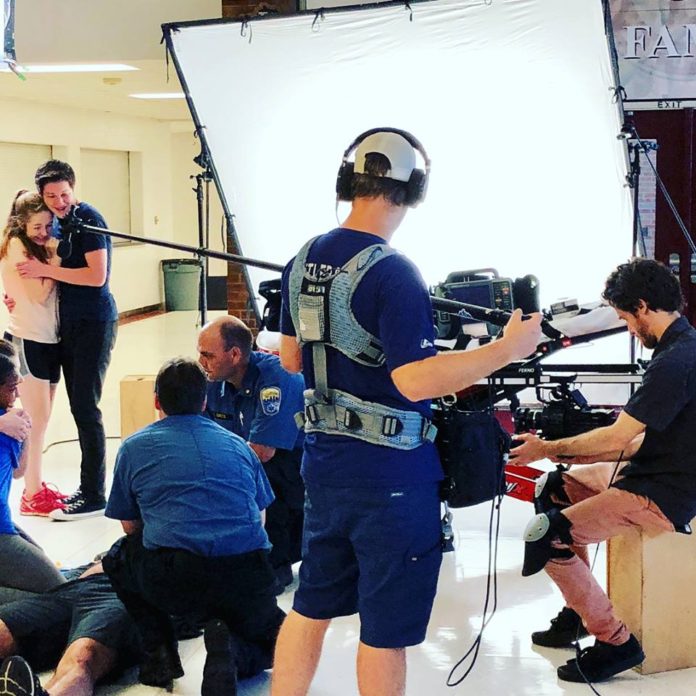
A beloved high school basketball coach suffers cardiac arrest at practice. Alone with his players, they are forced to step in to help save his life until an ambulance can arrive.
Dramatic, yes, but it’s a scene that could happen, and it’s the plot of a new CPR training film developed by a University of Louisville doctor. Lorrel Brown, MD, physician director for resuscitation at UofL Hospital and an assistant professor at the UofL School of Medicine, is hoping the novel approach will improve high school CPR training by helping students remember what they have learned by applying it to a real-life situation they can relate to.
CPR instruction in high school is now required by law in a growing number of states. Thirty-nine states have passed laws requiring the training before graduation, including Kentucky, which passed its law in 2016. Similar laws are being considered in the remaining states.
“The goal is to create a real, emotional scenario,” said Brown. “There are so many lives that could be saved if more Americans knew CPR, and we have all of these students coming out of high school with CPR training.”
About 4 million students per year now graduate with CPR training. Brown has studied CPR training in high school, with her work recently published in the Journal of the American College of Cardiology. She found CPR skill retention in high school students was poor, with only 30 percent able to perform adequate CPR six months after training. She also found that there was no standard method of implementation.
“We wanted to know, is there a better way to do it?” she said.
That’s where the film comes in. Working with the local Start the Heart Foundation and using $10,000 in grant money she received from winning the prestigious Stamler award for young researchers at Northwestern University last October, she modeled the film after one done in the United Kingdom, where CPR training also is required.
The interactive film, designed for classroom use in high schools and shot at Ballard High School by a local film company, forces students to make choices along the way about how to respond. It will be rolled out in local high schools this fall, then Brown will determine whether it improves skill retention. If it does – and Brown said she believes it will – the plan is to expand it across Kentucky and the nation.
“This could be a game-changer in the way CPR is taught in the United States,” she said.
The film used six local high school and college actors, and paramedics from Louisville Metro Emergency Medical Services, who brought an ambulance for one scene. In the film, the coach (Brown’s real-life husband, who auditioned for the part) suffers cardiac arrest during basketball practice, and staggers out into the lobby, where he becomes unconscious and falls onto the floor. He is found by a player, who, along with the other students at practice, must call an ambulance and perform CPR on the coach together until the paramedics arrive. The coach regains consciousness, and the students are congratulated by paramedics for saving his life.
In the United States, 350,000 people suffer cardiac arrest outside a hospital each year. Only 30 percent get bystander CPR, which affects whether they survive, Brown said. Only 11 percent of the 350,000 receive CPR. Brown has said that if CPR survival improved by just 1 percent, 3,500 more people would live.
Expanding and improving CPR training has been a personal mission for Brown, who has worked for several years on unique approaches. These days, effective CPR is hands-only, removing a barrier for some from the old mouth-to-mouth method. She also founded and directs a program called “Alive in 5” (alivein5.org), a 5-minute method of teaching CPR she developed.
The American Heart Association wants to double the percentage of cardiac arrest victims who receive bystander CPR by 2020, and CPR training in high schools has been endorsed by a variety of organizations.
“It’s important that people be willing to act, and that they remember the skills that they’ve learned,” she said. “As most cardiac arrests that don’t occur in a hospital happen in homes, it is likely they will save the life of someone important to them.”
See the filming
To watch a video on the making of the film, click here.

































